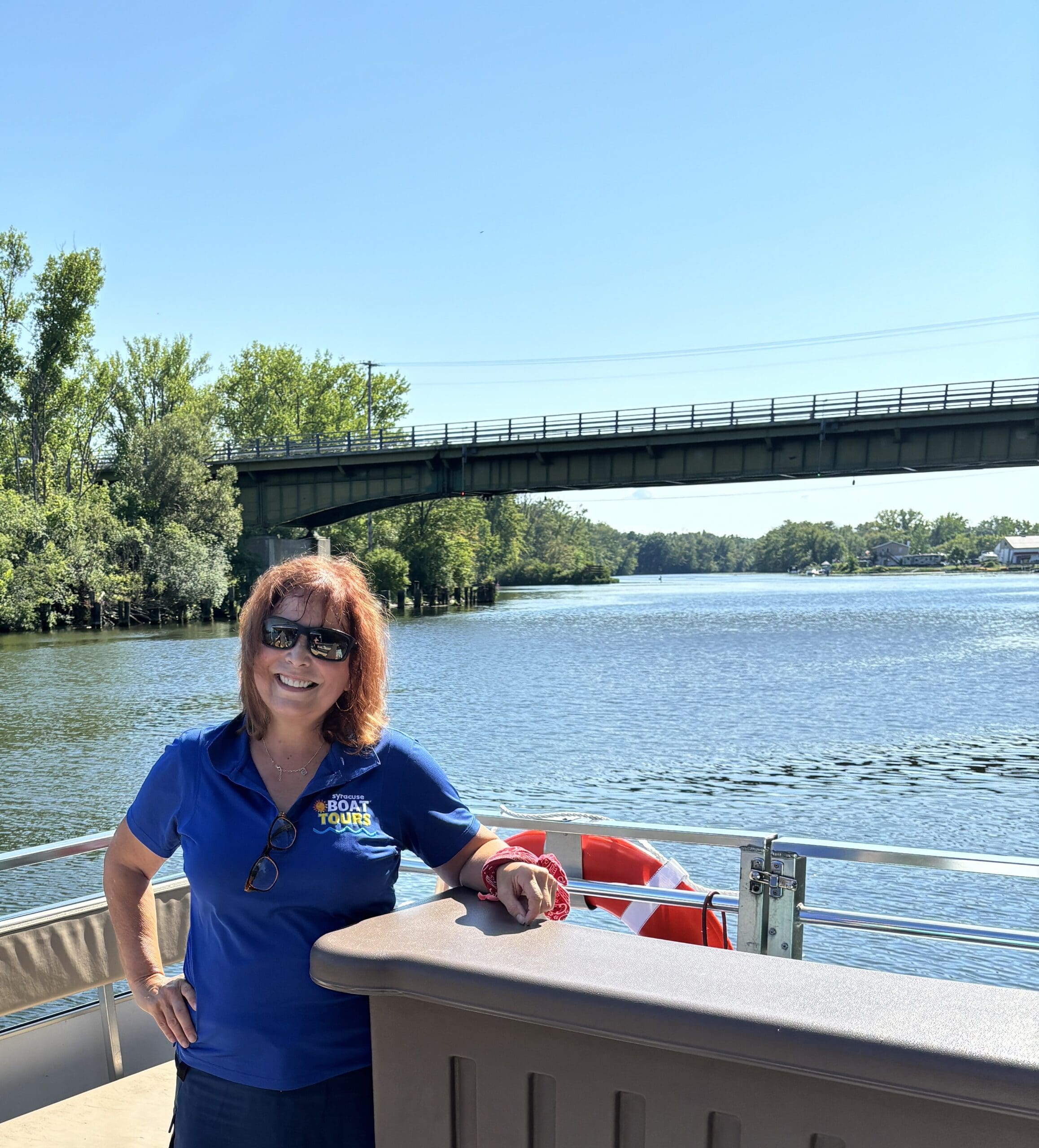Tell me about ProLiteracy. What is your mission?
It may be a surprise to you that every American has most likely interacted in one way or another with an adult who has little to no literacy skills.
About 36 million adults in the U.S. (that’s 1 in 6 adults) struggle with basic reading, writing and math skills. These individuals may not be able to read a menu, fill out a job application or read a bedtime story to their children. And contrary to popular belief, the majority of these people are very smart, and many have high school diplomas, despite their low skills.
Low literacy skills have stark ramifications for the next generation and our communities. The children of parents with low literacy skills are more likely to live in poverty as adults and are five times more likely to drop out of school.
For more than 60 years, ProLiteracy, the largest adult literacy and basic education membership organization in the nation, has been working across the globe to change lives and communities through the power of literacy.
How do you attempt to accomplish that mission?
To make our vision a reality, we support over 1,000 member programs in the U.S. and 32 countries worldwide that provide adult literacy instruction.
We advocate for awareness, funding, and support to increase access to educational resources for adults who want or need to improve their reading, writing, and math skills. We provide professional development to improve the effectiveness and efficiency of adult literacy programs and instruction. We create and produce more than 400 customized print and digital instructional tools for tutors and students.
Can you provide some information about adult illiteracy? Why are your services so necessary?
Adult literacy can change everything. Health. Income equality. Poverty. Every important social issue is impacted by low literacy. When individuals learn how to read, write, do basic math, and use technology, they have the power to lift themselves out of poverty, lower health care costs, find and keep sustainable employment, and ultimately improve their lives.
Here are some facts on the impact of low literacy:
Family Literacy
Children of parents with low literacy skills have a 72 percent chance of being at the lowest reading levels themselves. These children are more likely to get poor grades, display behavioral problems, have high absentee rates, repeat school years, or drop out.
Poverty
Of adults with the lowest literacy levels, 43 percent live in poverty, and 70 percent of adult welfare recipients have low literacy levels. There is a clear correlation between more education and higher earnings.
Health Literacy
An excess of $230 billion a year in health care costs is linked to low adult literacy. Nearly half of American adults have difficulty understanding and using health information. Low literacy has been linked to poor health outcomes, higher rates of hospitalization, less use of preventive services, minimal prescription and care plan adherence and death.
Unemployment/Workforce
Individuals at the lowest literacy and numeracy levels have a higher rate of unemployment and earn lower wages than the national average. Low literacy costs the U.S. at least $225 billion each year in non-productivity in the workforce, crime, and loss of tax revenue due to unemployment.
With the current unemployment rate at a historic low, U.S. employers are having difficulty finding qualified employees to fill a record number of job openings. The key to ensuring future U.S. economic growth is to bring traditionally marginalized or underemployed adults into the workforce with additional skills training.
Education
Every year, one in six young adults — more than 1.2 million — drop out of high school. Recent data show that nearly 30 percent of adults with household incomes at or below the federal poverty line do not have a high school credential. The key to financial success is a viable career path and adequate education to seek meaningful, family-supporting wages.
English Language Learners
About 50 percent of the 2 million immigrants that come to the U.S. each year lack high school education and proficient English language skills. This severely limits their access to jobs, college, and citizenship and increases their vulnerability to living in poverty.
Corrections
Seventy-five percent of state prison inmates did not complete high school or can be classified as low literate. Ninety-five percent of those incarcerated are reintegrated into our communities. Research shows that inmates who are educated are 43 percent less likely to return to prison.
What programs do you offer for adult learners?
Helping adults gain literacy skills helps reduce poverty, improve public health, and advance human rights worldwide. ProLiteracy increases the capacity and quality of adult literacy programs through professional development, training, exclusive resources, and content development for our powerful network of over 400,000 members and customers to support the programs and initiatives that have helped millions of adults gain the vital literacy skills they need.
We support organizations that offer adult basic education/adult literacy services through community-based literacy programs, community colleges, libraries, correctional facilities, faith-based organizations, and school districts.
Our programs and projects promote adult education through:
- Basic Literacy (reading, writing, basic math)
- English Language Learning (ELL)
- High School Equivalency Test Preparation
- Financial, Digital, and Health Literacy
- Native Language Learning Internationally
About how many people do you serve?
One of our goals is to increase access to educational resources for adults who need them. Through our network, ProLiteracy reaches over 1,000,000 adults annually who are working to improve their literacy skills.
You also offer professional development services. Can you talk about that a bit?
ProLiteracy’s professional development resources help program managers, instructors, trainers, and others across the country build the capacity and quality of adult education programs. Our tools and resources help adult education providers strengthen skills and learn new strategies to improve student outcomes in reading, writing, English language acquisition, and numeracy.
For example, The ProLiteracy Education Network is a web-based platform that contains a comprehensive collection of online courses and resources for adult literacy instructors and staff, and The ProLiteracy Conference on Adult Education addresses the most pressing adult literacy and basic education issues.
Tell me about your publishing division.
Adult learners need literacy materials designed with them in mind. For more than 50 years, New Readers Press (NRP), ProLiteracy’s publishing division, has provided educators with the instructional tools to teach adult students the skills they need to thrive. From basic reading instruction to high school equivalency and workplace skills development, NRP provides close to 400 titles to help adult students confidently take the next step forward.
What can you tell me about the international work you do?
Though most of our International program partners serve both men and women, 75 percent of the learners are women. Due to socioeconomic and cultural factors, women and girls often get bypassed when it comes to education. Yet research has consistently documented the fact that the higher the educational levels of women in the developing world, the more likely they are to marry at a later age, bear fewer children, earn more money, and live longer.
Why is literacy so important?
Literacy matters because the inability to read and write is often connected with other social issues. People who struggle with literacy are more likely to live in poverty, lack education, drop out of school, have difficulty finding employment, and miss out on opportunities to participate fully in society and the workforce.
Concerns about adult literacy are not new. In the past, the lack of ability to read was seen primarily as an individual problem, with implications for a person’s job opportunities, educational goals, sense of fulfillment, and participation in society. Now, however, it is increasingly viewed as a national problem, with implications that reach far beyond the individual.
How does literacy empower women, in particular?
Of the 36 million adults in the U.S. who have low literacy skills, 65 percent of them are women.
When women are empowered through literacy, they can find their voice, be strong, get educated, and improve their lives. Real life examples of women’s empowerment through literacy include: leaving abusive situations, getting better jobs, improving their health, breaking the cycle of poverty, and furthering their education so their children have an increased opportunity for academic success.





